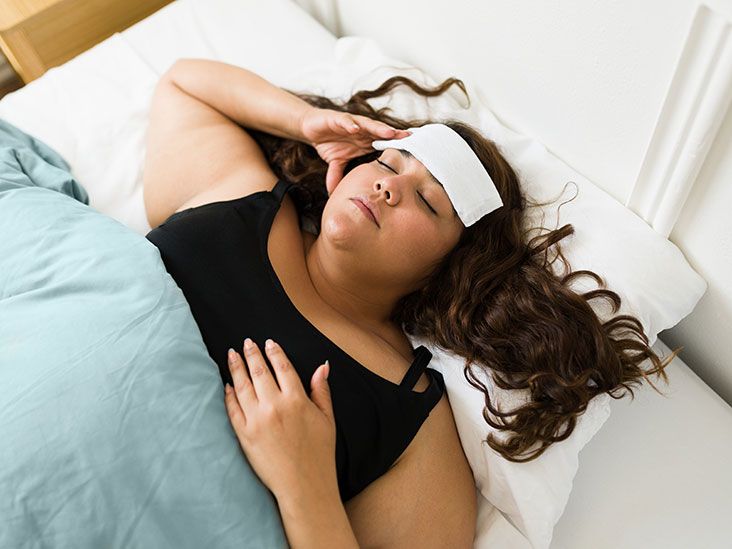Natural Remedies for Headaches, causing pain and discomfort that hinders daily activities. While there are various over-the-counter medications available, many individuals prefer natural remedies for headache relief. These remedies can provide effective results without the potential side effects of pharmaceutical drugs. This article will delve into five potent natural remedies for headaches that can help alleviate pain and improve overall well-being. From hydration and rest to essential oils, herbal remedies, and acupuncture/acupressure, there are a range of options to explore. By incorporating these natural remedies into a personalized headache relief plan, individuals can say goodbye to pain and hello to a healthier, more natural approach to managing headaches.
Understanding headaches and the need for natural remedies

Headaches can be debilitating, causing pain and discomfort that hinders daily activities. To effectively manage headaches, understanding their causes and implementing natural remedies is crucial. Natural remedies offer a holistic approach that addresses the underlying causes of headaches, providing long-term relief. By incorporating hydration and rest, essential oils, herbal remedies, and acupuncture/acupressure into a personalized headache relief plan, individuals can say goodbye to pain and hello to a healthier, more natural approach to managing headaches. It is important to consult with a healthcare professional before starting any new treatment or remedy to ensure safety and effectiveness.
Common triggers for headaches
Common triggers for headaches can vary from person to person, but some of the most common ones include stress, lack of sleep, dehydration, certain foods or drinks (such as caffeine, alcohol, or chocolate), poor posture, and bright lights. Identifying and avoiding these triggers can help prevent headaches from occurring in the first place. For those who already have a headache, it can be helpful to keep a headache diary to track potential triggers and patterns. By understanding and managing these triggers, individuals can take proactive steps towards preventing and alleviating headache pain.
Hydration and Rest
Hydration and rest are crucial for managing headaches. To stay hydrated, drink plenty of water throughout the day and limit your intake of caffeine and alcohol. Aim for 7-8 hours of quality sleep each night to help prevent headaches caused by fatigue. Additionally, practicing relaxation techniques like meditation or deep breathing can help alleviate stress and promote better rest. Remember to prioritize self-care and make hydration and rest a priority in your daily routine to reduce the frequency and intensity of headaches.
The importance of staying hydrated for headache relief

Staying hydrated is crucial for headache relief as dehydration can trigger headaches. Drinking an adequate amount of water throughout the day helps ensure that your body is properly hydrated. Limiting your intake of caffeine and alcohol, which can contribute to dehydration, is also important. Aim to drink 8-10 glasses of water daily and consider using a refillable water bottle as a helpful reminder to stay hydrated. Additionally, eating water-rich foods like fruits and vegetables can contribute to your overall hydration levels. By prioritizing hydration, you can reduce the frequency and intensity of headaches and promote overall well-being.
The role of adequate rest in managing headaches
Proper rest is essential for managing headaches. When you experience a headache, it’s important to take a break and prioritize rest. Find a quiet and comfortable place to lie down and relax. Close your eyes, practice deep breathing, and allow your body and mind to rest and rejuvenate. Creating a calm and peaceful environment can help alleviate headache symptoms and promote overall well-being. Avoid screens and noise during this time to minimize distractions. Remember to listen to your body and give yourself the rest you need to recover from headaches effectively.
Essential Oils
Using essential oils such as peppermint and lavender can provide effective relief for headaches. Apply a small amount of diluted oil to your temples, forehead, or the back of your neck, and gently massage the area. You can also inhale the aroma by adding a few drops of oil to a diffuser or a tissue. Remember to choose high-quality, therapeutic-grade essential oils and always dilute them before use. Experiment with different oils to find the ones that work best for you and provide the most relief. Incorporating essential oils into your headache relief routine can enhance relaxation and promote a sense of well-being.
Using essential oils such as peppermint and lavender for headache relief

Using essential oils such as peppermint and lavender can provide effective relief for headaches. Apply a small amount of diluted oil to your temples, forehead, or the back of your neck, and gently massage the area. You can also inhale the aroma by adding a few drops of oil to a diffuser or a tissue. Remember to choose high-quality, therapeutic-grade essential oils and always dilute them before use. Experiment with different oils to find the ones that work best for you and provide the most relief. Incorporating essential oils into your headache relief routine can enhance relaxation and promote a sense of well-being.
Methods of applying essential oils for maximum benefits
To fully maximize the benefits of essential oils for headache relief, there are several methods of application you can try. One method is to dilute the oil in a carrier oil, such as coconut or jojoba oil, and apply it directly to the temples, forehead, or the back of the neck. Gently massage the oil into the skin to increase absorption. Another method is to add a few drops of essential oil to a warm bath or foot soak for a relaxing and soothing experience. You can also create a homemade room spray by mixing essential oils with water in a spray bottle and spritzing it around your environment. Experiment with different methods to find what works best for you and provides the most relief.
Herbal Remedies
When it comes to finding natural relief for headaches, herbal remedies can be highly effective. Two popular herbs that are commonly used for headache relief are feverfew and butterbur. Feverfew has anti-inflammatory properties and can help reduce the frequency and intensity of headaches. Butterbur, on the other hand, has been shown to relieve migraines and tension headaches. It is important to note that while these herbs can be beneficial, it is crucial to follow recommended dosages and discuss their use with a healthcare professional. As with any natural remedy, it is also important to be aware of potential interactions with other medications or medical conditions.
Exploring herbal remedies like feverfew and butterbur for headaches

Herbal remedies like feverfew and butterbur can be highly effective in relieving headaches. Feverfew, with its anti-inflammatory properties, helps reduce the frequency and intensity of headaches. Butterbur, on the other hand, has been shown to relieve migraines and tension headaches. When using these herbal remedies, it is important to follow recommended dosages and consult a healthcare professional. Additionally, it is essential to be aware of potential interactions with other medications or medical conditions. By exploring these herbal remedies, individuals can find natural relief for their headaches and improve their overall well-being.
Recommended dosages and precautions when using herbal remedies
When using herbal remedies for headaches like feverfew and butterbur, it is important to follow recommended dosages and take necessary precautions. Recommended dosages can vary depending on the specific remedy and individual factors, so it’s crucial to consult with a healthcare professional or herbalist for personalized guidance. Additionally, it’s important to be aware of potential interactions with medications or medical conditions. When using herbal remedies, start with the lowest effective dose and gradually increase if needed. Keep track of any possible side effects or adverse reactions and discontinue use if necessary. Taking these precautions can help ensure the safe and effective use of herbal remedies for headache relief.
Acupuncture and Acupressure
Acupuncture and acupressure are effective natural remedies for relieving headaches.
In acupuncture, thin needles are inserted into specific points on the body to stimulate the flow of energy and alleviate pain.
Acupressure, on the other hand, involves applying pressure to these points using fingers, thumbs, or tools.
To try acupressure, locate the pressure points on your temples, between your eyebrows, or at the base of your skull, and apply firm pressure for a few minutes.
For acupuncture, consult a licensed practitioner who can assess your specific needs and provide personalized treatment.
Both techniques can provide relief for headaches and help improve overall well-being.
How acupuncture and acupressure can help alleviate headache symptoms

Acupuncture and acupressure are effective natural remedies for relieving headaches. In acupuncture, thin needles are inserted into specific points on the body to stimulate the flow of energy and alleviate pain. Acupressure, on the other hand, involves applying pressure to these points using fingers, thumbs, or tools. To try acupressure, locate the pressure points on your temples, between your eyebrows, or at the base of your skull, and apply firm pressure for a few minutes. For acupuncture, consult a licensed practitioner who can assess your specific needs and provide personalized treatment. Both techniques can provide relief for headaches and help improve overall well-being.
Pressure points to target for effective relief
To effectively target pressure points for headache relief, start by locating the acupressure points on your temples, between your eyebrows, and at the base of your skull. Using your fingers, thumbs, or acupressure tools, apply firm pressure to these points for a few minutes. This can help stimulate blood circulation, release tension, and alleviate headache symptoms. Additionally, you can try pressing the LI4 point, located in the web between your thumb and index finger, to relieve pain. Experiment with different pressure points and techniques to find what works best for you in managing your headaches.
Conclusion of Natural Remedies for Headaches

After exploring various natural remedies for headaches, it is clear that there are effective ways to find relief without relying solely on medication. By incorporating hydration and rest, essential oils, herbal remedies, and acupuncture or acupressure into a personalized headache relief plan, individuals can manage their symptoms and find long-term relief. It is important to remember that everyone’s experience with headaches is unique, so it may be necessary to experiment with different remedies and techniques to find what works best for each individual. By taking a holistic approach and considering natural remedies, individuals can say goodbye to pain and find lasting relief from headaches.
Creating a personalized headache relief plan with natural remedies
Creating a personalized headache relief plan with natural remedies involves understanding your specific triggers and symptoms. Start by identifying the common triggers that lead to your headaches, such as stress, certain foods, or lack of sleep. Then, experiment with different natural remedies like hydration, rest, essential oils, herbal remedies, and acupuncture or acupressure to find what works best for you. Keep a headache diary to track your pain levels and potential triggers. Implement lifestyle changes like staying hydrated, managing stress, and getting enough sleep. It’s also important to consult with a healthcare professional to ensure that your personalized plan is safe and effective for your specific needs.
Frequently Asked Questions about natural remedies for headaches
- Can hydration really help relieve headaches?
Yes, staying hydrated is crucial for headache relief as dehydration can trigger headaches. Aim to drink at least 8 glasses of water per day. - How can essential oils be used to alleviate headaches?
Essential oils like peppermint and lavender can be applied topically or inhaled for their soothing effects. Dilute a few drops in a carrier oil before applying to the temples or inhale the aroma. - Are there any precautions to take when using herbal remedies for headaches?
It’s important to consult with a healthcare professional before trying herbal remedies to ensure they are safe for you. Follow the recommended dosages and watch out for any potential side effects. - Can acupuncture or acupressure really help with headaches?
Acupuncture and acupressure target specific pressure points to alleviate headache symptoms. Many individuals find relief from these alternative therapies, but results may vary. - Why is it important to create a personalized headache relief plan?
Every person is unique, and what works for one individual may not work for another. By creating a personalized plan, you can identify and address your specific triggers and symptoms for more effective headache relief.
For More Blogs visit Aerns

